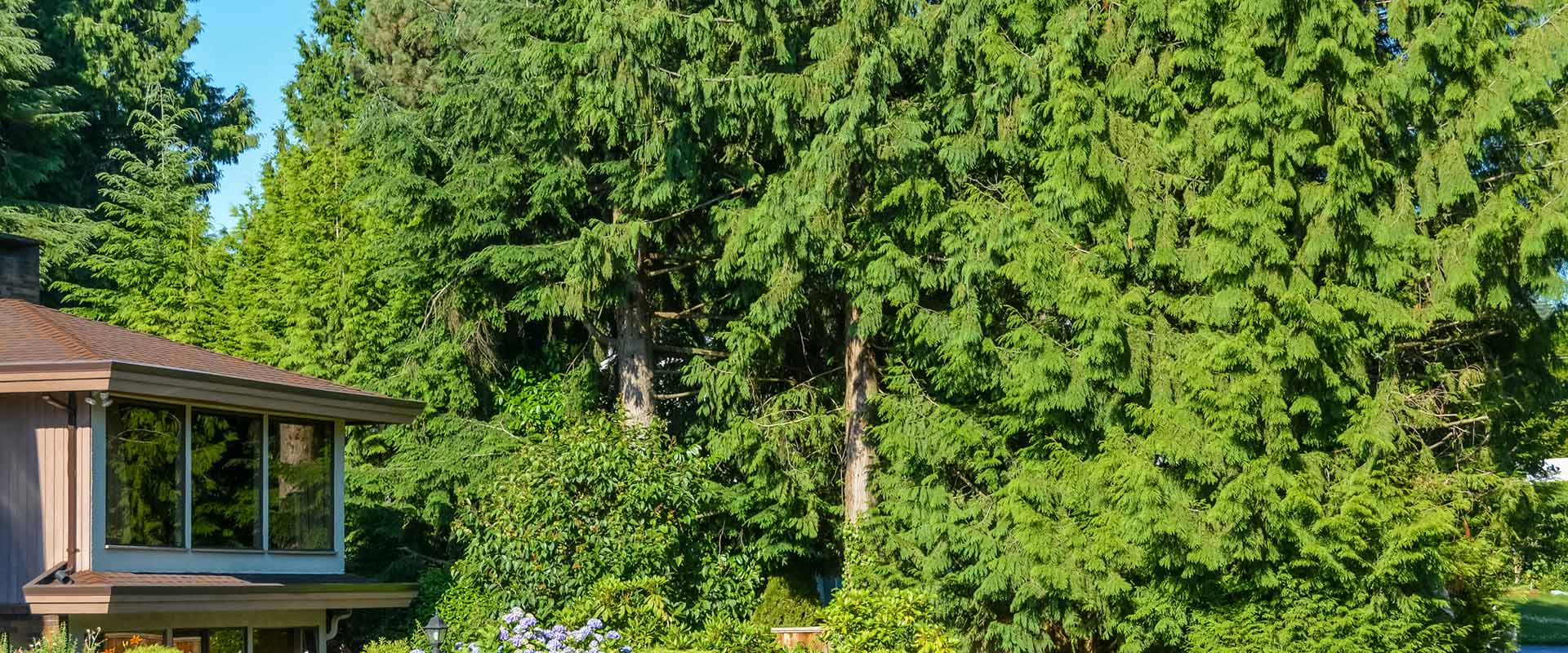Pruning mature trees on your Seattle area property is the most routine maintenance item you’ll do over the course of their life. It must be done using approved pruning techniques as improper pruning has consequences (permanent damage or even shortening its life).
Why prune your trees?
Trees growing in forests get pruned by nature and that’s good enough for them. The trees in your yard need more help to keep them structurally strong and looking good.
Removing a branch affects the tree’s growth and therefore, you should not start cutting without a plan. Any branches cut should be for one of these reasons.
- Remove dead or dying branches as they are most likely to break and cause damage.
- Allow more sunlight and air to circulate in the crown and/or reach ground underneath.
- Remove branches that are forming an obstacle or to allow clearance.
- Preventive or corrective pruning so tree grows more structurally strong.
Leaves play vital role
Be careful not to cut too much of the crown away. Leaves play a vital role in producing food for the tree. If you cut away too many leaves, it can’t manufacture enough sugar and the tree won’t have enough energy to sustain its growth and development.
When the tree can’t produce enough to sustain its growth, it’s forced to rely on stored energy reserves, which may not be enough to feed it. The tree becomes stressed, and its overall health may decline.
Don’t overdo it
Keep in mind younger trees tolerate removal of living tissue better than older trees. No more than 25% of the crown should be removed at one time on young trees and even less on mature trees.
The size, species and age of the tree needs to be considered, and you should always have a goal before you start pruning. Special care should be taken when removing a large-diameter limb as it leaves a large wound that may not close.
For these reasons, we recommend that pruning mature trees be done by a certified arborist or other tree professional. They will know the proper cuts to make to keep your trees healthy and strong.
Best time to prune
Trimming a few dead, dying or diseased limbs can be done at any time. All other pruning is best done before its spring growth flush. Doing lots of pruning after the spring growth flush is not recommended.
Why? The tree has just used up a lot of its energy to produce foliage and early shoot growth. Pruning away a significant amount of foliage puts undue stress on it. Also, a few tree diseases (like oak wilt) can be spread through pruning wounds, and this is an open invitation for pathogens to enter the tree.
If you have a tree that’s already struggling, prone to disease or recovering from a disease or infestation, it should especially not be pruned during active transmission periods.
Pruning terminology
- Cleaning-removing dead, dying, diseased and weakly attached branches from the crown.
- Raising-removing the lowest branches to create clearance for vehicles, people, buildings, etc.
- Reduction-reduces the tree’s size by reducing its height and/or spread and is usually done for utility line clearance.
Special note about reduction
This technique is best done by a tree professional as it’s a more complex procedure. It involves pruning back the leaders and branch terminals to secondary branches that are large enough to take on the terminal roles (minimum of one-third the diameter of the cut stem). Reduction maintains the tree’s form while keeping it structurally strong.
Reducing density of foliage in the crown is also called thinning. It’s done to allow more sunlight and air circulation to reach the leaves which promotes growth. It also helps the wind to move through the tree’s crown and decrease the chance of damage during periods of high winds.
Consider hiring a Certified Arborist
Pruning mature trees is best done by a certified arborist and crew using the proper tools and power equipment. The size alone presents many difficulties as equipment is usually needed to reach the upper portions of the crown. Add to that the increased danger of injury when working above the ground.
Eastside Tree Works has Certified Arborists and experienced ground crews that have the proper training and equipment to safely prune any size tree.
Contact us for your no-obligation free estimate for service at your Seattle, Eastside or North Bend property.

